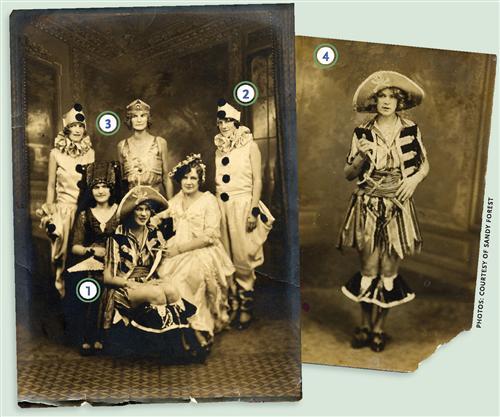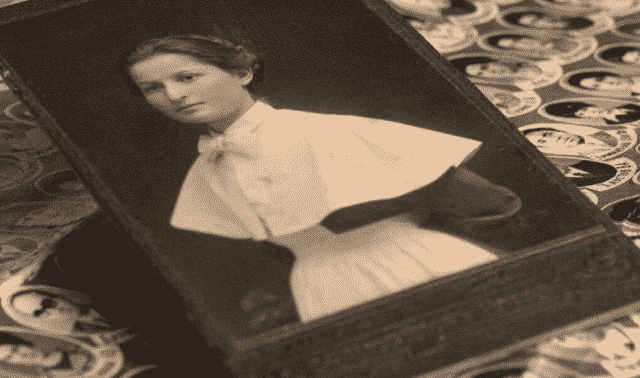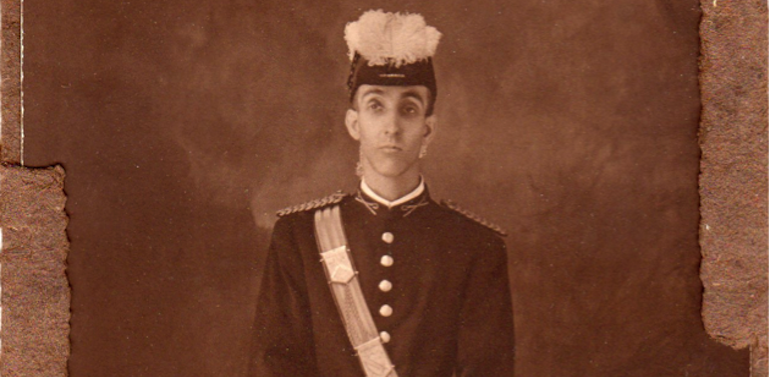Sign up for the Family Tree Newsletter Plus, you’ll receive our 10 Essential Genealogy Research Forms PDF as a special thank you!
Get Your Free Genealogy Forms
"*" indicates required fields
4 clues help reveal the story behind this intriguing image:
1. Costume check: Date Halloween photos based on when the costumes were in vogue.
2. Unmasked: Try to identify mystery friends using high school yearbooks.
3. Familiar faces: Use a magnifier to examine subjects’ faces. Treat similarities as clues, not evidence.
4. Cool and collected: Study your other photos for those taken on the same occasion or in the same studio.
Revealing identities
The woman in buccaneer attire is Forest’s aunt Connie, who was born in 1908 and lived in the town of Maspeth on Long Island, NY. Forest doesn’t recognize anyone else in the photo, but a comparison of facial features suggests the clown on the left has a similar nose, mouth and face shape to Connie’s. Perhaps she’s a relative. Such comparisons are subjective, of course, so don’t take physical resemblances as evidence of relationships — instead, use them to form hypotheses for further research.
This group also could be high school friends. To investigate further, Forest should find out when her aunt graduated and browse school yearbooks for familiar faces. The local public library, historical society or school district office might have yearbooks, or Forest can peruse digitized annuals on sites such as Dead Fred and DistantCousin.
Mastering disguises
Obviously, you can’t rely on the shape of a sleeve or trim on a bodice to date the clothing here. Instead, examine the subject of impersonation. In the 20th century, cartoon character and politician costumes joined the standard witch, goblin and pirate Halloween fare. For example, during the Depression, going as a hobo was a popular choice.
Connie poses here in a buccaneer outfit complete with a hat and knife. Two comedic harlequins standing in the back sport pom-poms and ruffled collars; the woman between them is wearing a flapper-style dress and headpiece. Seated on the left is a lady dressed as a Spanish princess (holding a fan); a fashionable 18th-century woman perches next to her. These costume choices were common during the 1920s.
Commercially produced costumes weren’t available until the 1930s. But an illustration in Dressed for Thrills by Phyllis Galembo (Harry N. Abrams) shows a 1925 Pictorial Pattern Co. sewing pattern for Connie’s outfit, from her hat to her swashbuckler boot tops. She modified the pattern’s skirt hem.
Collecting yourself
In addition to studying the details of each photo, look at all your family photos as a group. Connie’s costume and the identical background make it obvious the images shown here are part of a set. But Forest also has wedding and first communion photographs of family members standing in front of the same painted scene.
Check the backs of all your photos, too. The single portrait of Connie is a photo postcard, printed on sturdy cardstock with designated spaces on the back for a message and stamp. The stamp box design can indicate when a photo postcard was printed. I compared the stamp box on the back of Connie’s portrait with the examples in Real Photo Postcard Guide: The People’s Photography by Robert Bogdan and Todd Weseloh (Syracuse University Press). It was used around 1910, then reintroduced in 1926.
Clowning around
ADVERTISEMENT




